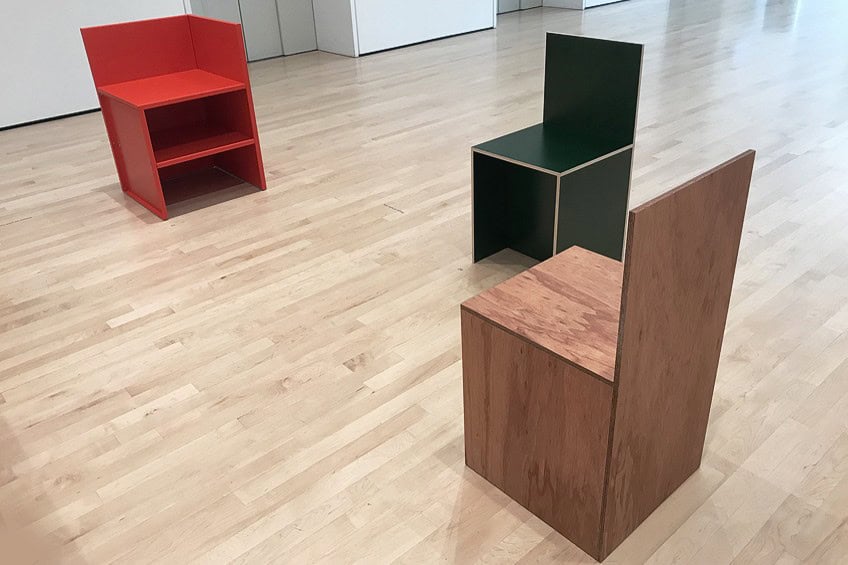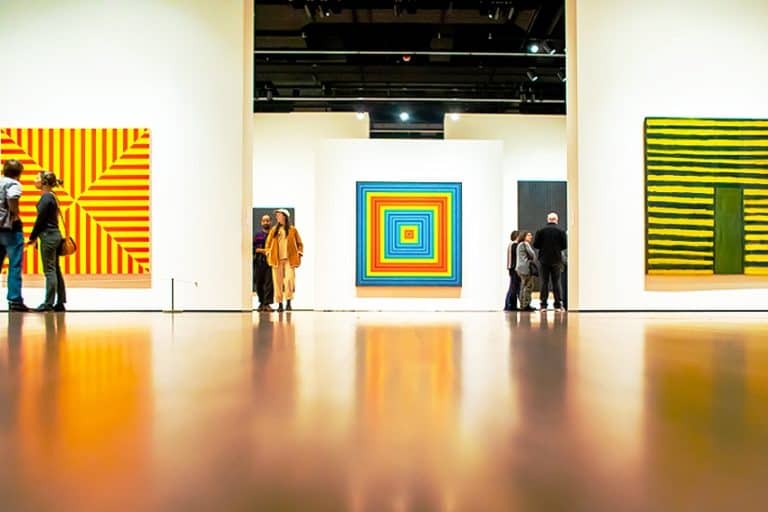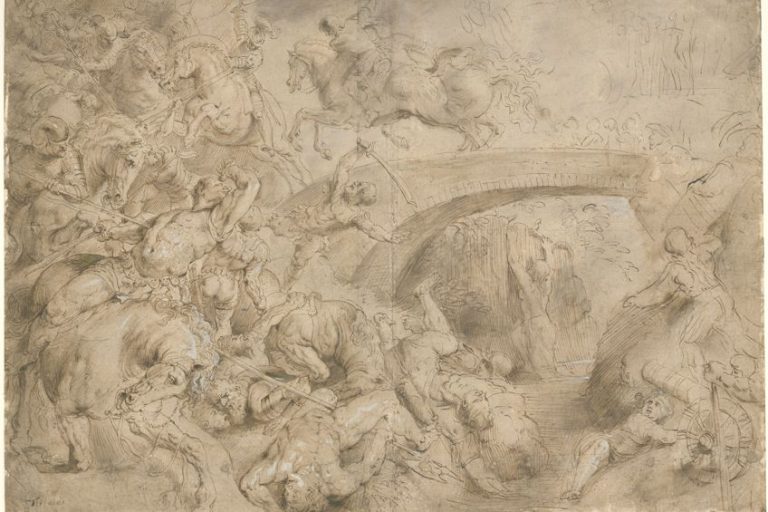Donald Judd Furniture – Form, Function, and Philosophy
Donald Judd, a pivotal figure in the Minimalist art movement, extended his aesthetic principles into the realm of furniture design, creating pieces that are both functional and profoundly artistic. Judd’s furniture, characterized by its geometric clarity and unadorned surfaces, adheres to the same rigorous principles of simplicity, precision, and integrity that define his sculptures and architectural works. His designs, which include tables, chairs, and beds, are crafted from industrial materials such as plywood, aluminum, and steel, emphasizing their structure and form over decorative elements. Judd’s furniture is not merely utilitarian; it embodies a philosophical stance on the purity of design, merging art with everyday life and challenging traditional distinctions between fine art and functional objects.
Key Takeaways
- Donald Judd’s furniture reflects his minimalist design philosophy.
- His designs emerged from a practical need for functional living spaces.
- Over 70 designs are available, impacting modern furniture design.
The Life and Legacy of Donald Judd
Donald Judd’s furniture stands as a testament to his belief in the integration of art and life. His minimalist designs, rooted in simplicity and functionality, emerged from a need for practical furniture in his own living spaces. Each piece is meticulously crafted to his original specifications, ensuring that his vision and intent remain uncompromised.
Judd’s journey into furniture design began in the early 1970s, driven by necessity rather than mere artistic pursuit.
Starting with essential pieces like beds and sinks, he eventually expanded his repertoire to include a wide range of wood and metal furniture. Collectors and enthusiasts appreciate the honesty and utilitarian nature of his work, recognizing it as a seamless extension of his larger artistic practice.

Today, over 70 of Judd’s furniture designs are available, reflecting his enduring influence on modernist design principles. Whether through custom orders or historical pieces, the legacy of Donald Judd’s furniture continues to shape contemporary interiors, blending art with everyday functionality.
Early Career and Transition to Furniture
Donald Judd began his career primarily as a painter and sculptor in New York. By the 1960s, his focus had shifted towards three-dimensional art, making him a central figure in the minimalist movement. In the 1970s, while designing his home and studio at 101 Spring Street in New York, Judd started creating furniture out of necessity.
His first pieces included a bed and metal sinks, bridging his minimalist concepts from art to functional design.
Judd’s approach to furniture was rooted in simplicity and utility, using materials such as wood and metal. His designs have remained iconic for their clean lines and craftsmanship, emphasizing an honest aesthetic devoid of unnecessary ornamentation.
Judd Foundation and Preservation of Judd’s Work
The Judd Foundation was established to preserve and maintain Donald Judd’s work and living spaces. With locations in New York and Marfa, Texas, the Foundation provides public access to his installations and promotes understanding of his furniture designs.

101 Spring Street in New York, Judd’s former home, remains a significant site where visitors can experience his integrated approach to art and living. The Marfa, Texas location expands on this vision, housing a large collection of his works and fostering an environment for reflection on his legacy. Through exhibitions, publications, and educational programs, the Judd Foundation ensures that Judd’s contributions to art and furniture design continue to influence and inspire future generations.
Design Philosophy and Material Use
Donald Judd’s furniture design blends an artistic approach with practical materials and methods. The interplay of form and function, coupled with his use of wood and metal, defines his unique style and construction principles.
Form and Function Interplay
Judd firmly believed that the design of furniture should maintain a balance between aesthetics and usability. He often emphasized that the same fundamental principles apply to both art and furniture design. Simplicity and clarity of form were crucial to his creations. He eschewed unnecessary ornamentation, ensuring that each piece was both visually pleasing and fully functional.
This philosophy of visible reasonableness meant that every design choice needed practical justification, demonstrating his commitment to functional beauty.
Wood and Metal as Signature Materials
Judd preferred the use of natural materials like wood and metal in his furniture creations. Wood, particularly plywood, offered durability and a clean finish that aligned with his minimalist aesthetic. Metal elements provided structural integrity and an industrial edge.

The combination of these materials allowed Judd to experiment with different textures and appearances while maintaining the functional aspects of his pieces. The tactile qualities of wood and the strength of metal exemplify his approach to functional, yet artistically valuable, furniture.
Production and Fabrication Processes
The construction methods employed in Judd’s furniture design involved precise craftsmanship and attention to detail. He often worked with small batches, ensuring each piece met his stringent standards. The local production in places like Marfa, Texas, allowed for close supervision of the fabrication process. Judd’s designs required skilled labor to realize the clean lines and flawless constructions.
Each piece was typically unique or part of a limited series, emphasizing both high-quality materials and meticulous workmanship in their production.
Impact on Modern Furniture Design
Donald Judd’s innovative approach to furniture design has left a significant mark on both contemporary craftspeople and the curation of his works in museums and exhibitions. His minimalist aesthetic and precise craftsmanship continue to influence and inspire.
Influence on Contemporary Craftspeople
Judd’s minimalist designs have profoundly influenced contemporary furniture makers. Craftspeople often seek to emulate his focus on clean lines and geometric forms. His use of industrial materials like metal and wood sets a standard for simplicity and functionality. This has inspired artisans to blend artistic expression with everyday utility. Judd’s works have inspired a return to basics, emphasizing proportion, and the intrinsic beauty of materials.
Craftspeople today continue to draw upon Judd’s principles, balancing art and practicality.
Judd’s Work in Museums and Exhibitions
Donald Judd’s furniture pieces are extensively showcased in museums and exhibitions, reinforcing his impact on design. The San Francisco Museum of Modern Art (SFMoMA) staged “Donald Judd: Specific Furniture,” highlighting his revolutionary approach.

These exhibitions have included 30 pieces from Judd’s lifetime and additional newly fabricated works. His installations at places like the MOMA and Judd Foundation’s The Block in Marfa, Texas, provide profound insights into his vision and methodology. Exhibiting at these venues spotlight Judd’s innovative contributions to both sculpture and furniture design, further promoting his legacy.
Donald Judd’s furniture transcends conventional design, embodying a seamless integration of art and utility. His commitment to minimalism and precision has resulted in pieces that are not only functional but also carry the weight of his artistic vision. By applying the same principles that govern his sculptures to his furniture, Judd has redefined the boundaries of art and design, creating works that are timeless in their simplicity and enduring in their appeal. His furniture stands as a testament to the power of minimalist aesthetics, challenging us to appreciate the beauty in the essential and the unembellished. Through his work, Judd has left an indelible mark on both the art world and the realm of design, inviting us to experience the profound elegance of pure form.
Frequently Asked Questions
How Can One Identify an Authentic Piece of Donald Judd Furniture?
Authentic Donald Judd furniture is made to his original specifications and is stamped and numbered sequentially. Verification often involves checking these identifiers. Judd’s designs are still available for custom order, adhering strictly to his guidelines, ensuring authenticity.
What Are the Common Characteristics of Donald Judd’s Furniture Design?
Judd’s furniture is marked by clean lines and minimalist forms. His designs emphasize function and simplicity, avoiding unnecessary decoration. The focus is on geometry and straightforward, elegant forms. This approach aligns with his philosophy that furniture should be both practical and aesthetically pleasing.
What Materials Did Donald Judd Commonly Use in His Furniture Pieces?
Judd primarily used materials such as plywood, metals, and hardwoods. He often chose these for their durability and minimalist aesthetics. Each material was selected with care, ensuring that the simplicity of the form was complemented by the natural beauty of the material.
How Has Donald Judd Influenced Modern Furniture Design?
Donald Judd’s approach to furniture design has impacted various modern designers. His emphasis on minimalism and function over form has inspired a shift towards simpler, more straightforward furniture. His work continues to resonate, reinforcing the concept that less can indeed be more in design.
Isabella studied at the University of Cape Town in South Africa and graduated with a Bachelor of Arts majoring in English Literature & Language and Psychology. Throughout her undergraduate years, she took Art History as an additional subject and absolutely loved it. Building on from her art history knowledge that began in high school, art has always been a particular area of fascination for her. From learning about artworks previously unknown to her, or sharpening her existing understanding of specific works, the ability to continue learning within this interesting sphere excites her greatly.
Her focal points of interest in art history encompass profiling specific artists and art movements, as it is these areas where she is able to really dig deep into the rich narrative of the art world. Additionally, she particularly enjoys exploring the different artistic styles of the 20th century, as well as the important impact that female artists have had on the development of art history.
Learn more about Isabella Meyer and the Art in Context Team.
Cite this Article
Isabella, Meyer, “Donald Judd Furniture – Form, Function, and Philosophy.” Art in Context. August 13, 2024. URL: https://artincontext.org/donald-judd-furniture/
Meyer, I. (2024, 13 August). Donald Judd Furniture – Form, Function, and Philosophy. Art in Context. https://artincontext.org/donald-judd-furniture/
Meyer, Isabella. “Donald Judd Furniture – Form, Function, and Philosophy.” Art in Context, August 13, 2024. https://artincontext.org/donald-judd-furniture/.











